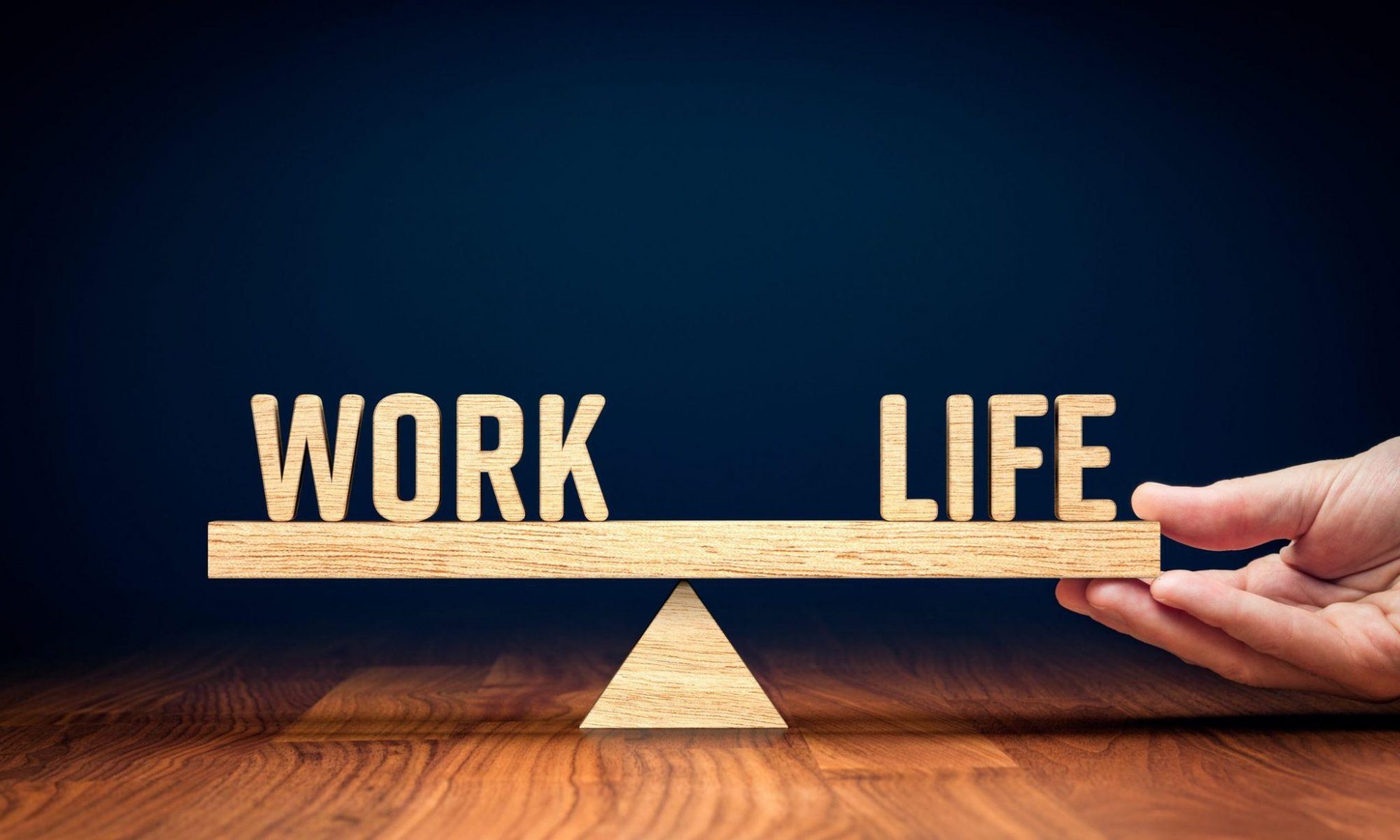Working 9 to 5 is falling further and further behind. Past generations may have seen work as the be all and end all, but we’ve all come to better understand the relationship between it and health. We are increasingly aware of the place that personal life occupies in all of this. The work-life balance (WLB) concept is self-explanatory: it refers to the feeling of harmony obtained between work and personal life, without conflicts between them. If you must work overtime, for example, you may find yourself in a work-family conflict, where you cannot fulfill your duties to your job and your family equally. In this case, the work-life balance is anything but balanced.
Typically, when you talk about achieving work-life balance, you’re talking about a work schedule that doesn’t require you to sacrifice personal time in favor of more hours. Striking that balance is often seen as vital to worker happiness and an admirable organizational culture.
Productivity should be aligned with our values. Please check the relevant productivity masterclass and teamwork and leadership masterclass. You don’t have to pay the full amount. Just send an email to info@keytostudy.com and ask for a big discount. We promise you’ll be happy with it!
Why is work-life balance important?
Everyone wants more time in the day to do the things they love, so isn’t a better work-life balance just wishful thinking? Actually, it is much more than that. Achieving a work-life balance has proven to be extremely important for mental and even physical health for both office workers and freelancers. Lack of balance can lead to what is known as “occupational burnout syndrome”, defined by the World Health Organization as follows:
“…a syndrome conceptualized as a result of chronic stress in the workplace that has not been successfully managed. […] Feelings of lack of energy or exhaustion; increased mental distance from work, or negative or cynical feelings about work; and reduced professional effectiveness”.
Burnout syndrome is on the rise, causing workers to lose motivation and productivity, as well as being linked to heart disease, blood pressure and types of diabetes. Simply put, being in a constant state of stress is not healthy for anyone, or any company.
Tips to achieve a balance between personal and work life
Achieving a healthy work-life balance is as much a matter of attitude as it is of action. Here’s how you make sure you’re on the right track toward achieving harmony for you and your team:
Know your value
You might be surprised to know that a quality work-life balance is one of the things people want more than anything. Through a recent study, it was found that workers would be willing to be paid less if it meant they could work for a company that identified more with them. It’s quite a commitment to make regardless of personal circumstances. However, it is a clear indicator that work is no longer seen as something that lasts a lifetime, but as a means to live it. What does this mean for you and your team? They should know that you are looking out for their interests and well-being, both in the office and at home.
Stop calling it balance
An increasingly popular idea about the conflict between personal and work life is to stop thinking of it as a delicate balance and, instead, see it as life as a whole. For example, don’t think that sending a few work emails over the weekend automatically detracts from your weekend as “free time.” Similarly, don’t think that taking a break during the workday implies that you are neglecting your tasks.
Manage time and energy
The workday is more than the number of hours you spend at a desk. Try approaching your work tasks in a new way, perhaps by adopting a to-do list or a time-management technique like the Pomodoro technique. If you are a manager or boss, you should give your team the freedom to explore different ways of working and managing tasks. Our energy naturally goes through peaks and valleys throughout the day: don’t criticize a coworker for not being on peak production all the time. This leaves you less stressed and more energized to make the most of your off-work hours.
Plan and manage expectations
Planning your work week in advance helps you determine how much time you can actually devote to your personal life. For example, planning an outing every week can lead to failure, disappointment and wear. Set more realistic expectations for yourself to have a more balanced energy for both personal and work life.
Schedule time off as soon as possible, even if you don’t think you need it. Do it in a cadence, rather than around an event, like vacations or holidays. Choose an arbitrary date and a recurrence, such as the second Tuesday of every month for six months. That way, your team can look forward to it, and you know you’ll have that designated time to recharge.
If you lead a team, don’t expect the impossible from its members. Try to approach a project knowing that anything can go wrong and consider it, even the PERT planning technique created by the Navy contemplates that things don’t always go right.
Think about your surroundings
Whether you work at home or in an office, you need to be aware of the things you choose to surround yourself with. You may not have much control over the office layout, but do your best to keep your work area clean and tidy – the old adage “tidy desk, tidy mind” is a valid statement. Similarly, when you get home, make sure you feel in a space designed to be relaxed and to reduce your stress levels. Don’t leave work documents out, don’t have work emails constantly open on your phone. If you work from home as a freelancer, try to keep your office space confined to a room or desk that you can leave at the end of the workday.
Don’t take away from mental health
That applies to both your team and you. More and more companies understand the importance of “mental health days”, meaning that employees can take time off to recharge energy as they see fit. Being physically “sick” doesn’t have to be the only reason to take time off to rest. Be open with your team about the importance of mental wellbeing, don’t embrace or foster a sense of shame by admitting that you don’t feel 100% all the time – everyone does. Although this attitude does not solve the problem, it can certainly help to lessen the load. 55% of workers worry about requesting vacation to treat a mental health problem. By creating an open and honest forum, and by not hiding your inner feelings, you can help your team spend less time stressed and hopefully help lessen the intensity these issues can have on your worker’s life.
Don’t do it alone
Many modern workplaces see their teams as more than just names or numbers—they’re extended family. Colleagues are invited to hang out together at social events and after work, while team chats via Slack or Zoom are often the norm. Essentially, colleagues are invited to see each other as friends, people they can connect with and trust. Having this sense of camaraderie can make a world of difference to work-life balance – in fact, isolation was found to have a negative impact on motivation for those who started working remotely without a distributed team to support them
That said, distance can’t stop your team from connecting, especially today with so many effective remote work tools at your disposal. Just make sure everyone knows about and has access to all the collaboration tools they need to create an easy-to-use, unified workspace.
Conclusion
The heart of a good work-life balance is ensuring that you and your team take care of your personal and family life. This doesn’t mean that no one should downplay their professional life, but everyone should remember that work and life outside of work are equally important. Your coworker isn’t just a person who shows up with a laptop eight hours a day. You are also a human being, with hundreds of valuable obligations outside of work. When everyone embraces this way of thinking, they will find that they can achieve a quality work-life balance together.

